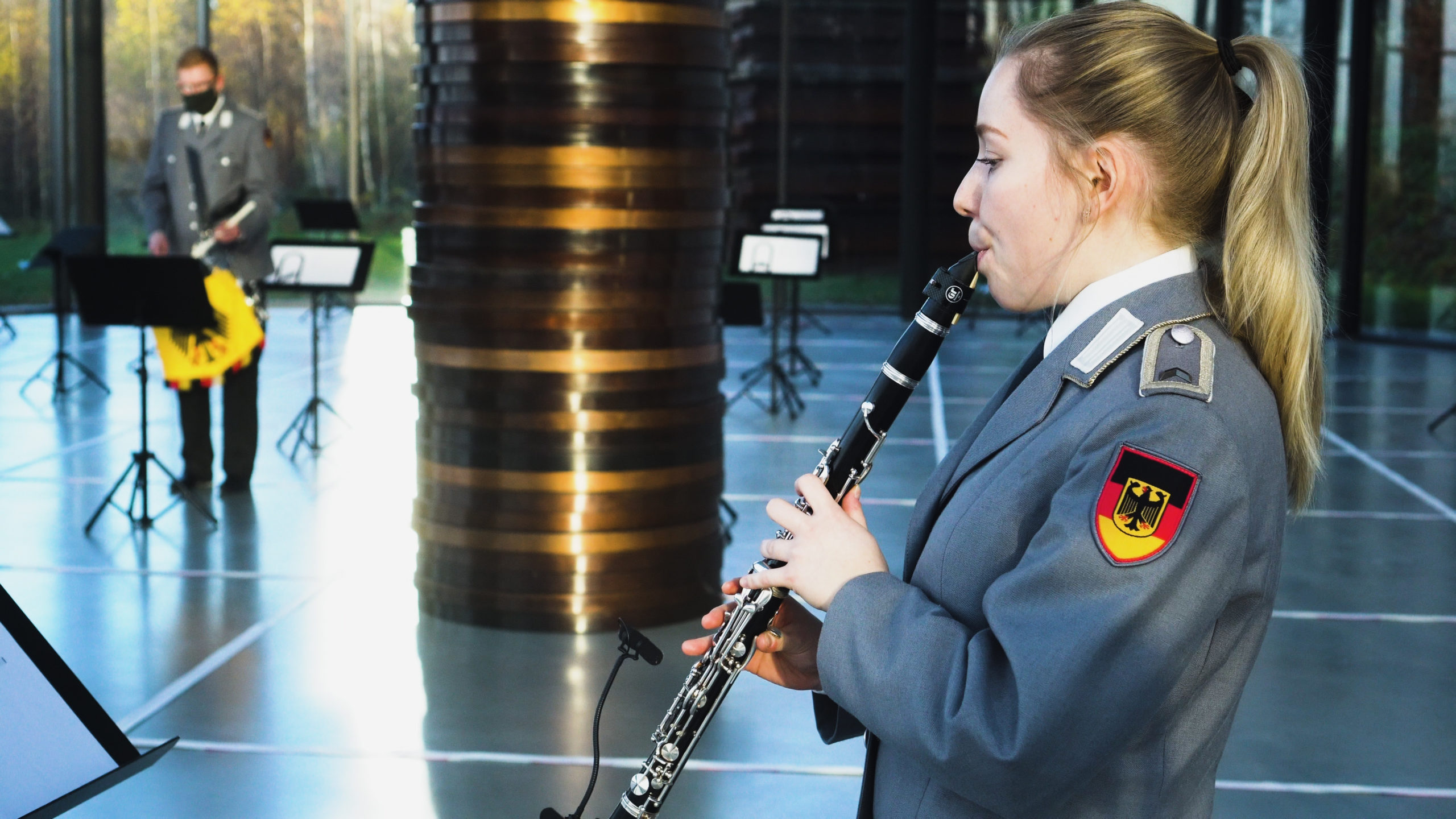I am a transmedia composer. By transferring concepts into different media, I create an ambiguous experience. I want to uncover the breaks and gaps in hierarchies and enable a new perspective in concerts, performances and sound installations. By working far away from concert halls - for example in public swimming pools, water towers, research institutes, museums or rural meadows - I am looking for a multi-layered audience.
Feel free to contact me.
NDM is an aleatoric performance that opens up an expanded individual decision space, a conscious engagement with one’s own voice, and an encounter with the audience.
The specifications of the composition are limited to providing musical patterns that can be played in any sequences and combinations.
How can I experience community and individuality at the same time?
Where is consideration appropriate?
When does individuality become a problem?
The musicians of the Army Training Band (Ausbildungsmusikkorps der Bundeswehr) move along marked paths in the piazza at K21. These paths are indicated by lines on the floor, on which the direction of movement can be chosen individually. Music stands with pattern of the composition are positioned throughout the space. During the performance, the musicians choose different music stands and play the patterns on them. The audience can move freely in the room and vary the listening positions. The inspiration and starting point for the 24 combinable patterns are the rank badges of the German Armed Forces.
Further informations
Locations
Cragg Foundation – Skulpturenpark Waldfrieden – 24. November 2020
In the exhibition of Sean Scully, „INSIDEOUTSIDE“
Kunstsammlung NRW – K21 – Piazza – 9. Oktober 2019
As part of the concert series „Sonify“, curated by Phillip Schulze, on the occasion of the exhibition „Carsten Nicolai. Parallax Symmetry“, 28.9.2019 – 19.1.2020
Composition
in collaboration with Patrick Arnold, Philipp Reimann
In the composition NDM, the musical patterns are based on the rank badges (symbols) of the German Armed Forces. Patrick Arnold, Philipp Reimann and Vincent Stange developed a concept that translates the graphic badges into music.
The ranks are divided into five groups: Enlisted men, non-commissioned officers (with and without seniority), officers, staff officers (captains and lieutenants) and generals. These groups are assigned to five musical categories: Rhythm, Harmony, Melody, Dynamics and Improvisation. The categories build up on each other, so that the last group of generals includes all musical parameters.
The rank group Enlisted men is assigned to rhythmics. The insignia of the corporal, for example, shows five diagonal bars, grouped in threes and twos. These are translated into a corresponding rhythm in 6/8 time of three and two eighth notes.
The rank group of non-commissioned officers is transferred to the harmony category. Here the patterns always refer to the interval structure of the harmonic series.
The melodic category is derived from the officers‘ badges. All officer grades show one or more stars in the badge. The higher the officer grade, the more stars are shown in the badge. The star symbol is translated into an atonal motif. The musical „star“ motif is repeated transposed upward, always as many times as the star appears in the respective badge.
In the badge of the staff officers and generals there is a semicircular oak leaf. This is sounded by a musically dynamic sequence.
The category improvisation is assigned to the group of generals. Notes with an instruction are given, which the interpreters can freely handle and improvise with. In the group of generals, it was not so much the badge as a graphic that was taken into account, but the strength of the freedom of command.

The musicians of the Army Training Band
The musicians of the Army Training Band receive their musical training at the Robert Schumann music conservatory in Düsseldorf. The training lasts four years. Wind and percussion instruments as well as keyboard are taught, since all these instrument groups and instruments are used in a modern symphonic wind orchestra. The training concludes with the sergeant’s examination in music and is the final qualification for the professional military musician to be subsequently deployed in a German Army Band as an orchestral musician in the sergeant’s career.



















pictures by Joanna Stange, Rahel Stange, Lambert Windges, Matthias Heuermann, Simon Hohne
works inside: Coin Stacks 2-4, 2020 // 12 Triptychs, 2008